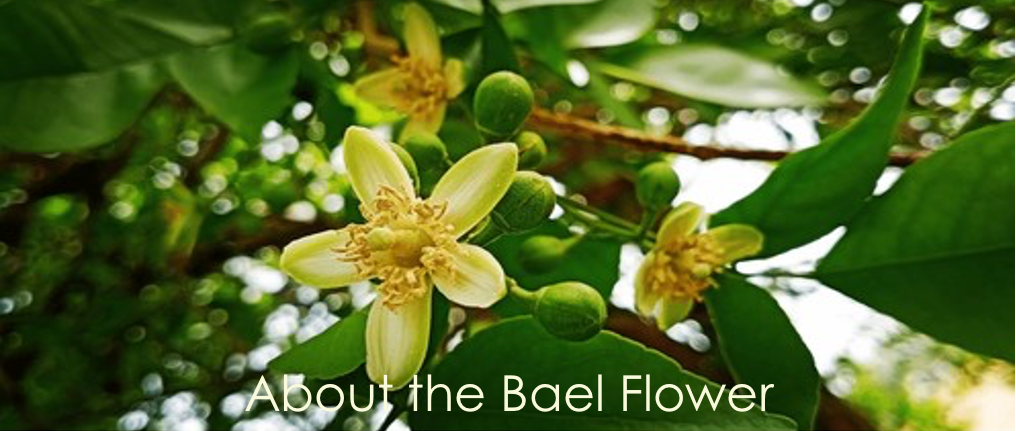Todays post is about the Bael flower.
I was recently reading the box of 1 of my favourite teas and saw that these flowers were 1 of the ingredients. I had never heard of this flower, so decided to research it and as usual, I am sharing what I found.
What is Bael ?
The Bael tree or Aegle marmelos is a deciduous shrub or small to medium-sized tree that can grow up to 13 metres tall. The flowers are small, pale green or yellowish and sweetly scented.
The Aegle marmelos is most commonly known as Bael. However, around the world it is also known as Bengal quince, golden apple, Japanese bitter orange, stone apple or wood apple. It is a species of tree native to the Indian subcontinent and Southeast Asia. The plant is also considered to be sacred by Hindus and Buddhists.
It seems that it is most prized for its fruit. The fruit has a hard, woody shell that is smooth and greenish grey. When fully ripe the shell turns yellow or golden orange. Inside is a fibrous yellow pulp has been described as tasting of marmalade and smelling of roses.
Bael and health benefits
I found many references relating to the health benefits and uses for the Bael fruit. It seems that for centuries the fruit has been used for antioxidant, anti-inflammatory and laxative properties. Herbal medicinal preparations of the Bael plant have been used as a laxative and to treat chronic diarrhoea, dysentery, peptic ulcers and respiratory ailments.
Most of the preparations are made from the fruit, though the bark and leaves of the plant are also used.
The flowers are also recorded to be beneficial to health. The flower has some antiseptic, as well as, astringent properties and have been used in treating epilepsy. A preparation known as Marmala water, created from the flower, has been found helpful in curing conjunctivitis. Bael flower extract has also been successful in tests for wound healing properties.
The flowers and tea
Often the flowers are used as an aromatic addition to specialty teas. As a herbal remedy, a drink made by brewing the flowers alone, is traditionally used to relieve gastro-intestinal conditions & indigestion. It is also used for treating asthma and malaria.
So, there we have it, a flower that is added to tea to help with its smell, could also be providing some assistance (though very small) with the health of the intestinal system.
I hope you found this information interesting,
till the next post,
Live Clean n Prosper
Sources – Wikipedia – Hindawi – Science Direct – WebMD –

